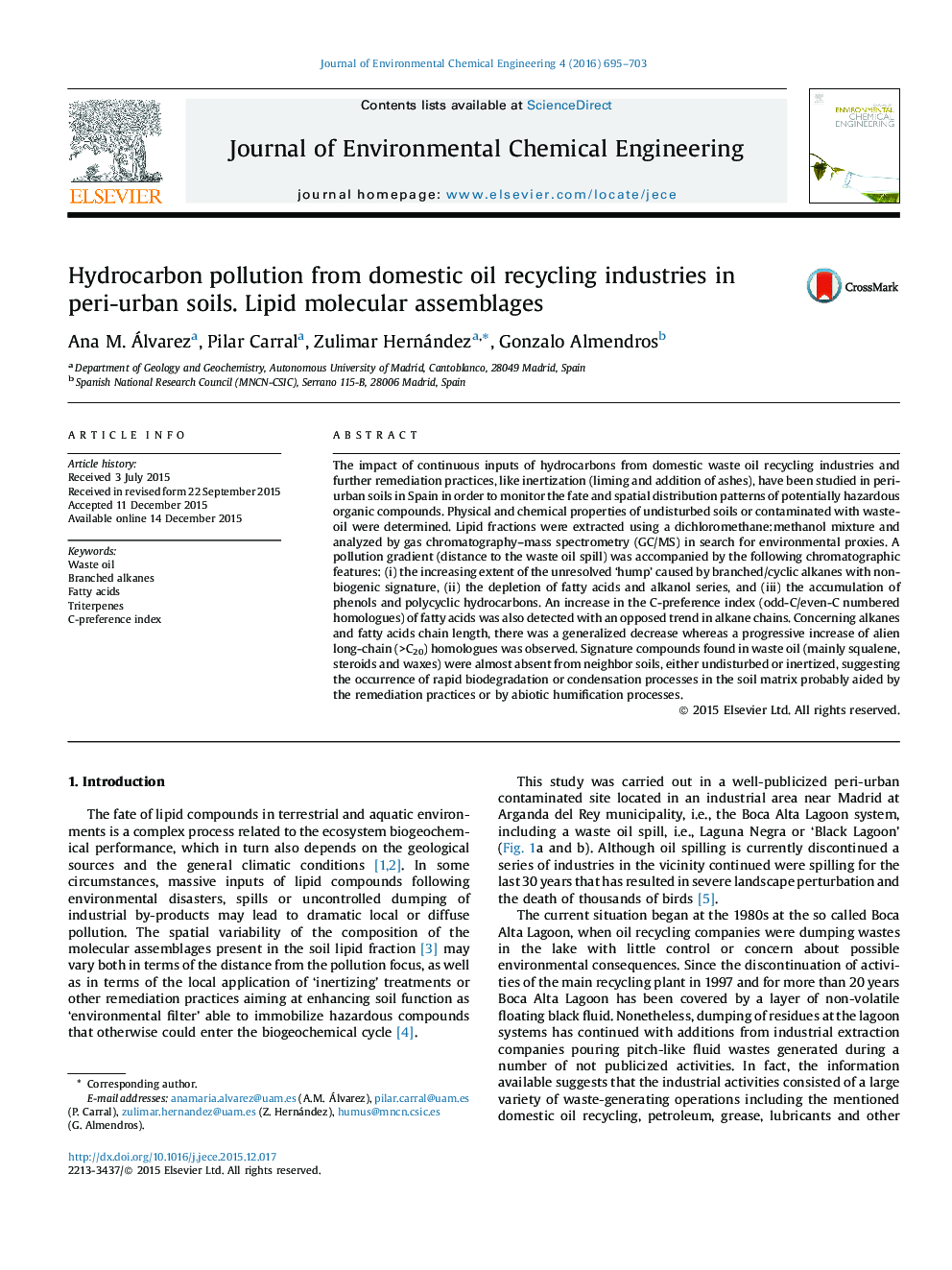| Article ID | Journal | Published Year | Pages | File Type |
|---|---|---|---|---|
| 221925 | Journal of Environmental Chemical Engineering | 2016 | 9 Pages |
•The effect of local discharge waste oil from the recycling industry is studied in soils.•Branched/cyclic alkanes (including squalene), fatty acids, alkanols and waxes prevail in contaminated soils.•The lack of signature compounds in neighbor soils indicates rapid local lipid biodegradation or condensation in the soil.•Markers like C-preference index and long/short chain length ratios of fatty acids are useful proxies for monitoring waste oil pollution gradients.
The impact of continuous inputs of hydrocarbons from domestic waste oil recycling industries and further remediation practices, like inertization (liming and addition of ashes), have been studied in peri-urban soils in Spain in order to monitor the fate and spatial distribution patterns of potentially hazardous organic compounds. Physical and chemical properties of undisturbed soils or contaminated with waste-oil were determined. Lipid fractions were extracted using a dichloromethane:methanol mixture and analyzed by gas chromatography–mass spectrometry (GC/MS) in search for environmental proxies. A pollution gradient (distance to the waste oil spill) was accompanied by the following chromatographic features: (i) the increasing extent of the unresolved ‘hump’ caused by branched/cyclic alkanes with non-biogenic signature, (ii) the depletion of fatty acids and alkanol series, and (iii) the accumulation of phenols and polycyclic hydrocarbons. An increase in the C-preference index (odd-C/even-C numbered homologues) of fatty acids was also detected with an opposed trend in alkane chains. Concerning alkanes and fatty acids chain length, there was a generalized decrease whereas a progressive increase of alien long-chain (>C20) homologues was observed. Signature compounds found in waste oil (mainly squalene, steroids and waxes) were almost absent from neighbor soils, either undisturbed or inertized, suggesting the occurrence of rapid biodegradation or condensation processes in the soil matrix probably aided by the remediation practices or by abiotic humification processes.
